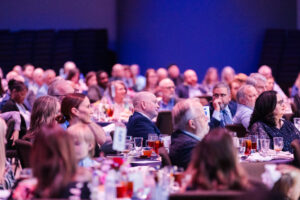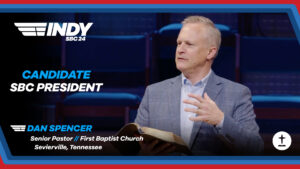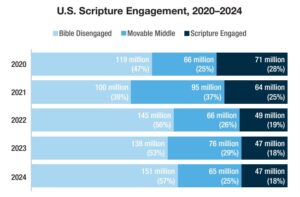
Saint Louis skyline and the mighty Mississippi River. Photo by Dan Donovan. Copyright © St. Louis Convention & Visitors Commission. All rights reserved.
Known for its famous “Gateway Arch”—the world‘s tallest arch, roughly 630 feet high—Saint Louis serves not only as a “Gateway to the West,” but also as a gateway to the lost world.
The city ranks high in several areas: It has the second-oldest symphony orchestra in the nation, a top-notch baseball stadium, and one of the nation‘s top ten zoos. But the city is also one of the most unreached areas in the state of Missouri. Out of the Saint Louis metro‘s population of nearly three million people, only 18 percent are evangelical. Southern Baptists simply can‘t afford to ignore this city.
“Mound City”
Although Saint Louis was founded in 1764, people have long been drawn to this territory on the banks of the Mississippi River. Centuries ago, Native Americans left their imprint in the earth, living in the area long before Lewis and Clark embarked on their celebrated voyage in 1804, traveling westward from Saint Louis along the Missouri River. These Native American tribes gave Saint Louis the nickname “Mound City” for the large mounds they erected throughout the region.
Many of these mounds have long ceased to exist, and today Saint Louis is better known around the nation for its pitcher‘s mound. Indeed, on the opening day of baseball season, many employees take off work and many parents keep their kids out of school. Dressed in Cardinals red, they turn on the TV or head to Busch Stadium to watch their eleven-time World Series champions play ball.

Saint Louis Zoo—Sea Lion. Photo by Gordon Radford. Copyright © St. Louis Convention & Visitors Commission. All rights reserved.
A City of Attractions
But baseball isn‘t the only entertainment that might attract Southern Baptists to Saint Louis. The city is also full of family fun and great dining options: Saint Louis‘s massive Forest Park—nearly double the size of New York‘s Central Park—is the home of the Saint Louis Art Museum, Saint Louis Zoo, Saint Louis Science Center, and Missouri History Museum. Southern Baptists can also visit the Missouri Botanical Garden, one of the oldest institutions of this kind in the nation. Moreover, they can enjoy City Museum, a 600,000-square-foot interactive museum for children and adults alike. In dining, visitors wouldn‘t regret eating out at any of the authentic Italian Restaurants on “The Hill,” historically a portion of the city populated by Italian immigrants. For dessert, they could grab frozen custard at Ted Drewes.
A City of Religion
Just as baseball isn‘t Saint Louis‘s only attraction, it also isn‘t the only subject that stirs the religious fervor of Saint Louis residents. Although 42 percent of the city‘s population do not claim to be part of any religion, many people in the city have deep-seated religious affiliations. Deriving from the city‘s French past, many Catholics—nearly 24 percent of the population—live in the area. Because of this French Catholic heritage, the city was once known as the “Rome of the West.” Additionally, the city is home to the national office for The Lutheran Church—Missouri Synod.
“Saint Louis is a very religious city. Most people have some sort of background with religion,” Noah Oldham, SEND Saint Louis coordinator for the North American Mission Board, said. “Knowing that is part of their lives, you can‘t come in and just offer them some kind of religion. . . . It‘s got to be a living, thriving relationship with Jesus Christ. It‘s got to be letting them see the crucified and resurrected Savior and all He means to their lives.”
Saint Louis is also a gateway city into the United States, drawing hundreds and thousands of people from throughout the world and from diverse religious backgrounds. In fact, Saint Louis is the home to seventy thousand Bosnians, many of them Muslim. This makes Saint Louis the center for the largest population of this people group outside of their homeland.
Jim Breeden, director of missions for the Saint Louis Metro Baptist Association, called Southern Baptists to come to Saint Louis to help with Crossover, a week of evangelism and ministry leading up to the SBC annual meeting in June.
“We invite you to come both to reach the neighborhoods of Saint Louis—some of which are unreached completely—and also to reach the nations, the peoples that have come to Saint Louis,” Breeden told Southern Baptist messengers at the close of their annual meeting in Columbus, Ohio, last June.
“We have prayed . . . for laborers for the fields that are white unto harvest,” he added. “So we hope that you will come for a short time. And we pray that some of you will stay for a long time and help us both to plant and replant churches to the glory of God in Saint Louis.”

Busch Stadium. Photo by Dan Donovan. Copyright © St. Louis Convention & Visitors Commission. All rights reserved.
A City of Division
The need for Gospel ministry and church planting in Saint Louis is highlighted by the city‘s deep divisions. Delmar Boulevard, running from east to west through Saint Louis, poignantly displays this divide. Directly to the south of the “The Delmar Divide” lay million-dollar mansions; directly to its north lay poverty stricken neighborhoods. The divide is also racial. Nearly 70 percent of the people living in the affluent area south of the divide are white; nearly 98 percent of those living north of the divide are black.
According to Oldham, Saint Louis is filled with tension from racial division—a reality that the nation was reminded of when riots broke out in the Saint Louis suburb of Ferguson in 2014. The church is “waking up” to these issues, Oldham said. And God is at work among some churches that have faithfully served their communities over the years or others that are now renewing their vision to transform lives with the Gospel.
As such, Oldham said, Southern Baptists should come to Saint Louis this summer “with eyes open and with hearts open,” ready to see where ministry is needed and where God is already at work to transform lives and communities through the Gospel.














